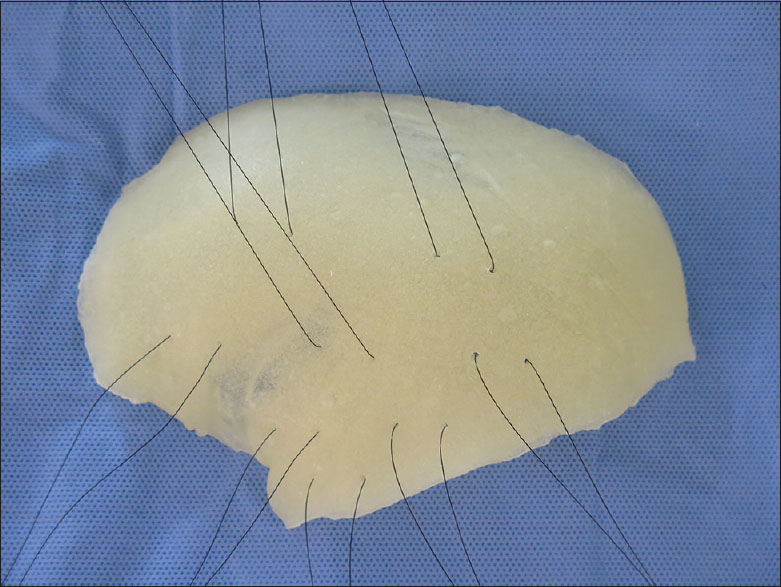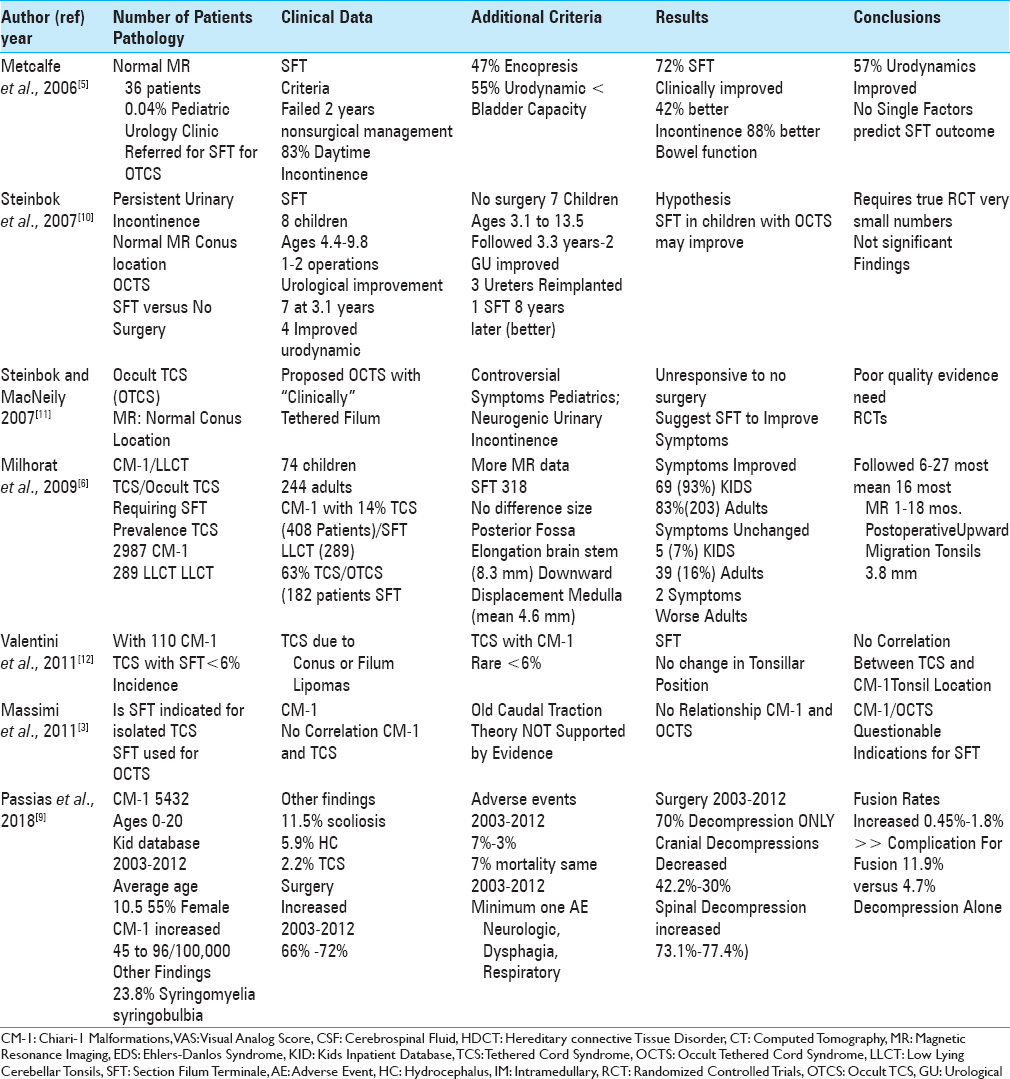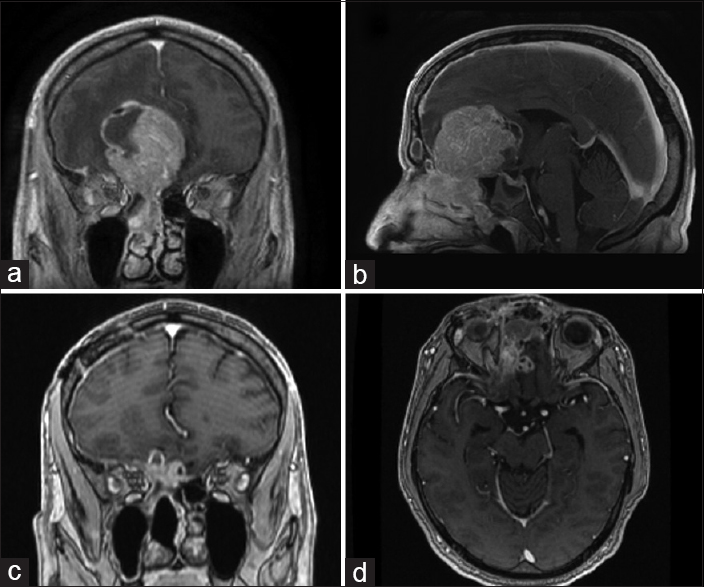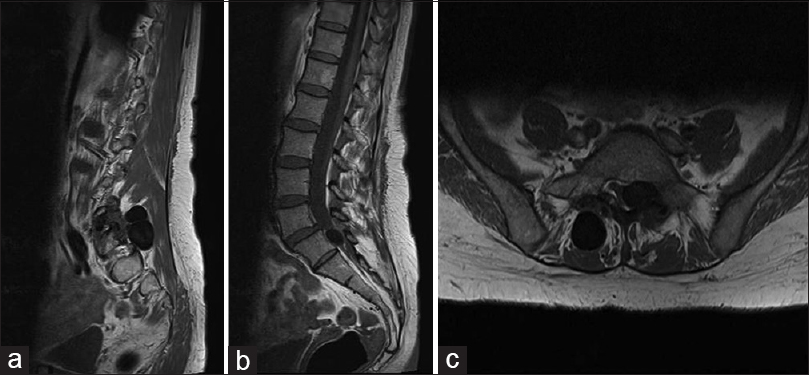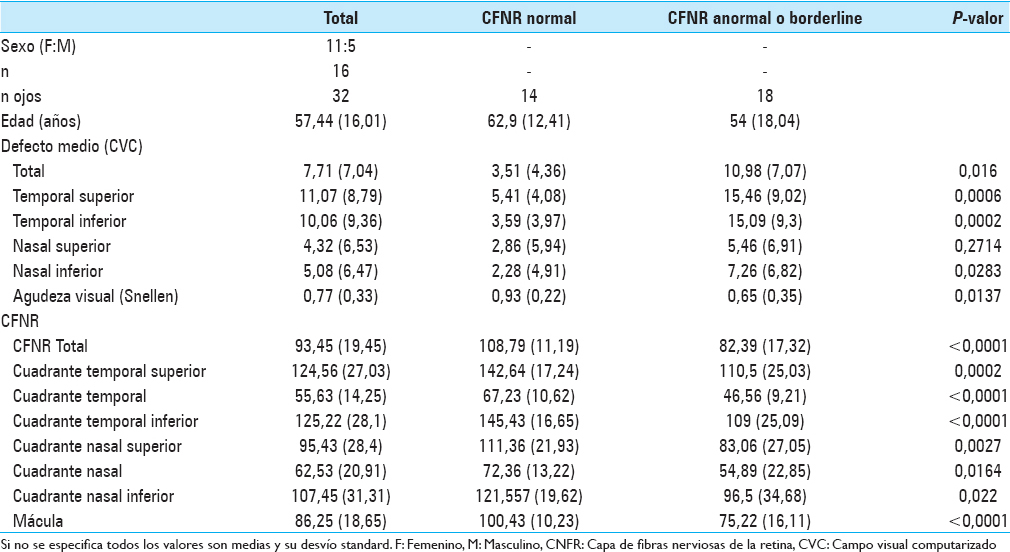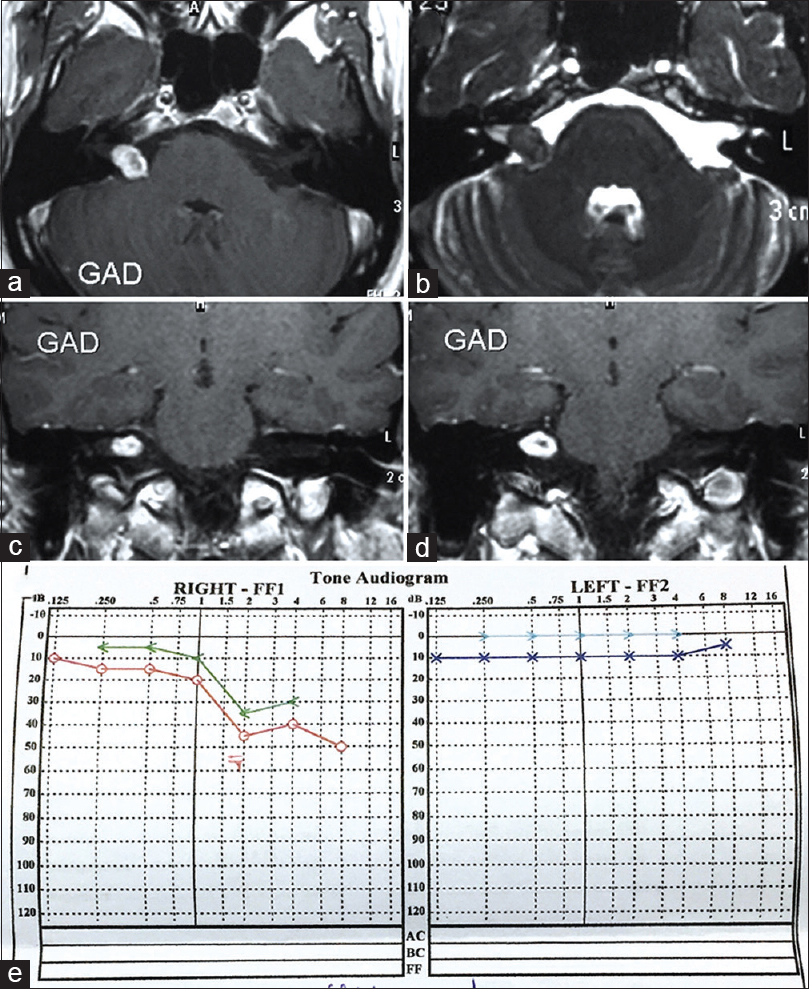Adhesion sutures for seroma reduction in cranial reconstructions with polymethyl methacrylate prosthesis in patients undergoing decompressive craniectomy: A clinical trial
Date of publication: 22-Aug-2018
Background:Cranial reconstruction with polymethyl methacrylate (PMMA) prosthesis is used for calvarial defects secondary to decompressive craniectomies. Seroma is one of the most frequent complications of this procedure and can lead to the dehiscence, extrusion, infection, and loss of the prosthesis. The objective of the study is to analyze the effectiveness of the tacking sutures between the prosthesis and the scalp flap in reducing the seroma.
A review of the disagreements in the prevalence and treatment of the tethered cord syndromes with chiari-1 malformations
Date of publication: 14-Aug-2018
Background:The tethered cord syndrome (TCS) accompanying Chiari-1 (CM-1) malformations and the occult tethered cord syndrome (OTCS) syndrome accompanying the low lying cerebellar tonsil (LLCT) syndrome may be treated with sectioning of the filum terminale (SFT).
A rare case of intracranial teratocarcinosarcoma: Case report and review of literature
Date of publication: 14-Aug-2018
Background:Teratocarcinosarcoma (TCS) is a rare malignant neoplasm with epithelial and mesenchymal components such as fibroblasts, cartilage, bone and smooth muscle. With less than 100 total reported cases, this malignant neoplasm is rarely encountered by neurosurgeons because it primarily involves the nasal cavity and paranasal sinuses.
Intraspinal calcinosis mimicking intervertebral disc extrusion: A clinical and surgical case report
Date of publication: 14-Aug-2018
Background:Subcutaneous calcinosis is a well-recognized manifestation of systemic sclerosis that usually involves multiple pressure points and may also be found in the paraspinal or intraspinal regions. In this case, intraspinal calcinosis uniquely led to a severe neurological deficit.
One burr-hole craniotomy: Enough lateral approach to foramen magnum in helsinki neurosurgery
Date of publication: 14-Aug-2018
Background:In this video-abstract, we present a one burr-hole craniotomy for the enough lateral approach (ELA) to the foramen magnum developed in Helsinki Neurosurgery, a less invasive variant of the classical far lateral approach. ELA does not require the resection of the occipital condyle nor the exposure of the extracranial/intraosseal course of the lower cranial nerves. The vertebral artery is not transposed and the sigmoid sinus is not skeletonized. ELA allow us to access lesions that are close to the level of the foramen magnum (less than 10 mm). In this regard, low-lying vertebral aneurysms, foramen magnum meningiomas, or low brainstem cavernomas and intrinsic tumors are our common indications for this approach.
One burr-hole craniotomy: Subtemporal approach in helsinki neurosurgery
Date of publication: 14-Aug-2018
Background:In this video-abstract, we present the Helsinki Neurosurgery one burr-hole craniotomy standard subtemporal approach to the floor of the middle fossa and the interpeduncular space. This procedure facilitates access to the multiple structures; the basilar artery bifurcation, the superior cerebellar artery, or the P1-P2 segments of the posterior cerebral artery, and lesions located around the posterior clinoid process/less than 10 mm above it. Even though the specific location and size of the lesion may vary, this approach accesses all mentioned structures with very minimal variation.
One burr-hole craniotomy: Upper retrosigmoid approach in helsinki neurosurgery
Date of publication: 14-Aug-2018
Background:In this video-abstract, we present a one burr-hole craniotomy for the upper retrosigmoid approach developed in Helsinki Neurosurgery to access the lateral cerebellar hemisphere, the cerebellopontine angle, and lateral skull base (e.g. including the posterior petrous bone). This approach may be utilized to manage tumors of the lateral posterior fossa and to perform microvascular cranial nerve decompression of the V or VII cranial nerves. The upper portion of the vertebral-posterior cerebral artery complex, and the anterior inferior cerebellar artery may also be accessed with this technique. Even though the specific location and size of the lesion may vary, this approach accesses all mentioned structures with a very minimal variation.
One burr-hole craniotomy: Supracerebellar infratentorial paramedian approach in Helsinki Neurosurgery
Date of publication: 14-Aug-2018
Background:In this video abstract, we present a one burr-hole craniotomy for the standard supracerebellar infratentorial (SCIT) paramedian approach developed in Helsinki Neurosurgery for the microsurgical management of pineal region lesions, tentorial meningiomas, as well as arteriovenous malformations, aneurysms, and intrinsic tumors of the superior surface of the cerebellum. In this regard, the use of praying sitting position in Helsinki Neurosurgery, which is a more ergonomic variant of the classic sitting position, offers several advantages such as lower intracranial pressure, good venous outflow, gravitational retraction, and straight anatomical orientation.
Tomografía de coherencia óptica como predictor de recuperación visual en pacientes con macroadenomas hipofisarios
Date of publication: 13-Aug-2018
Introducción:Los macroadenomas hipofisarios tienen una elevada incidencia de pérdida visual como consecuencia de la compresión de la vía óptica. La tomografía de coherencia óptica (TCO) ha sido descripta como un factor pronóstico de recuperación. Nuestro objetivo es evaluar si la TCO puede predecir los resultados de recuperación visual.
Fresado de la fosa subarcuata para liberar la arteria cerebelosa anteroinferior en una cirugía de un Schwannoma vestibular
Date of publication: 13-Aug-2018
Introducción:El abordaje suboccipital retrosigmoideo es la vía principal para la resección de los Schwannomas vestibulares (SV). La relación vascular más constante de los nervios del conducto auditivo interno es la arteria cerebelosa anteroinferior (ACAI); pudiendo su recorrido presentarse como un serio obstáculo para la resección completa de la lesión.


